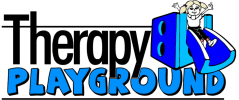
[embedyt] http://www.youtube.com/watch?v=V35GEET_xLs[/embedyt]
Brittany and Ashleigh discuss what to expect during an OT evaluation.
We’ve both been asked several times questions like what should I do if my child needs an evaluation?
Or what will you be doing during the eval? Or even how long is this going to take?
The first question I want to answer is “How do I begin the process of getting the OT eval?”.
You need to go take your concerns to the doctor and request an OT evaluation. If it’s recommended by the physician, then a referral will be made.
What Should I know beforehand to best help my child participate in an OT evaluation?
You should expect 2 hours of testing. We ask that you arrange for childcare for your other children, that way you are able to participate in the OT eval. Arrive early to fill out paperwork, or bring paperwork that can be found on our website.
It is necessary for the primary caregiver to be present for the whole eval. The therapist will be asking the caregiver questions about what the child can do, and that way we can get a larger picture of the child’s level of function. We asked that you know the child’s developmental milestones such as when they first walked, crawled, or rolled over. Make sure to clarify which location you’re supposed to be at, have your child wear loose fitting or comfortable clothing so that he or she can move easily, and although we high encourage parent participation, it is up to us to determine the level skill without any assistance. We need the opportunity to see the areas that may be difficult for your child in order to find out what we can do to best help them.
It may be difficult for you to watch your child struggle, and you may want to try to help them, but it would be best to help them by allowing us to determine the underlying challenging areas as they complete a task on their own.
What should I bring to the OT eval?
It’s important to bring all of the equipment that the child uses to participate, whether it’s braces, splints, orthotics, any type of adaptive equipment, even glasses are very important to bring to the evaluation. It’s also important to bring the prescription for OT, that can be faxed over ahead of time, that’s definitely OK. Also bring the names and address of the doctors or people you’d like to send copies of the evaluation to.
Bring the child’s IEP, also any documentation of testing that’s taken place whether it’s genetic, psychological, neurological, all case related history information is very helpful. It’s important to bring concerns related to functional performance. What I mean by that is my child has difficulty tying their shoes, or difficulty holding a pencil, or remaining on task at school, or they’re not able to tolerate loud sounds. Or any kind of difficulties with Activities of Daily Living. Like getting dressed, eating, self-care.
It’s important to bring your insurance card, and that will be taken at the front desk. The parent questionnaire should be brought if it’s filled out ahead of time. Also bring a sample of your child’s handwriting, it helps to have a sample that was written in the child’s natural environment so we can look at that to see if there’s other factors playing into the difficulties of handwriting. Finally, if feeding is a concern, bring food to the evaluation. Bring a few preferred and non-preferred foods so we can take a look at that.
“What is the purpose of an OT evaluation?”.
An OT evaluation is used to determine to what extent functional performance is being effected by underlying factors. In children, OT is looked at areas of occupation, at home, school, and in the community to see how those areas of difficulty are impacting their ability to best perform and encourage increased independence. The child’s main occupation are play, school, and activities of daily living which may include things such as
getting dressed, taking a bath, or feeding themselves.
How will the child be assessed?
Well we always do a parent interview, the parent interview includes things such as questions regarding their level of function including the activities of daily living. We always do a standardized assessment using PDMS-2, BOT-2, Veery VMI, or a visual assessment. These give us descriptions of the child’s level of function such as average, below average, or above average, that type of thing. We will also have the parent fill out a sensory questionnaire if there are sensory concerns and this will help us determine which areas of sensory processing the child may be having difficulty with.
And then we also use what we call skilled observations, this is where we use all of our specialized training and observation to find difficulty in areas such as how the child is holding a pen or pencil, their quality of movement, strength, positioning, following directions.
Once the assessment is completed what happens next?
The evaluating therapist will then recommend frequency and duration of services if they are recommended at that time. Typically sessions are 1 or 2 times per week or once per month. But that can vary.
The evaluation will then be sent to the referring physician and the child will be scheduled as convenient for the family within the times available. The therapist will continually advocate and work through the OT process until the outcomes are met.
